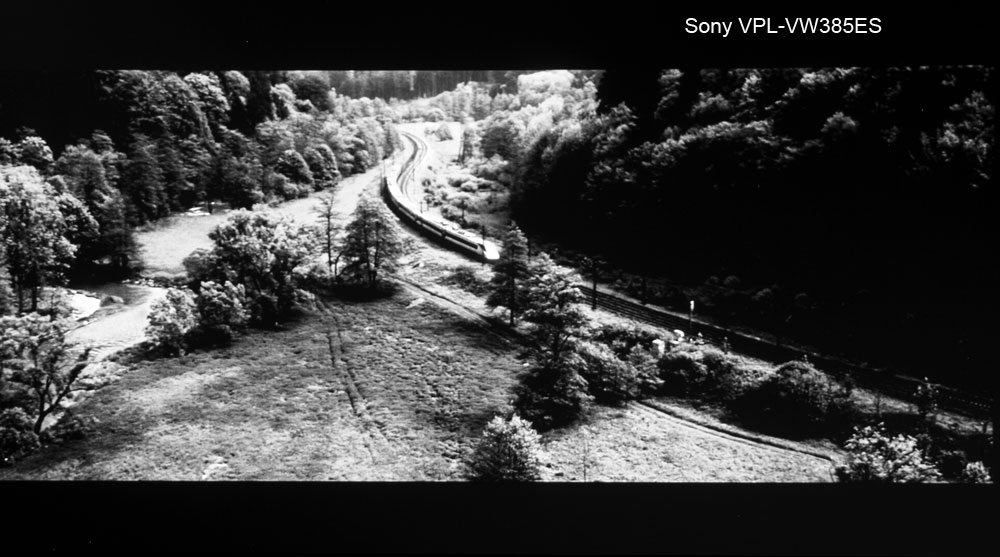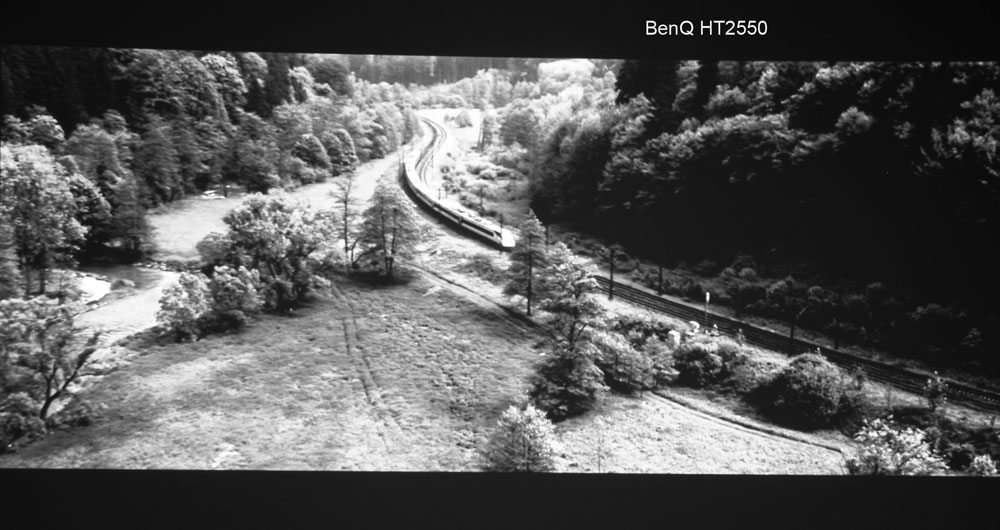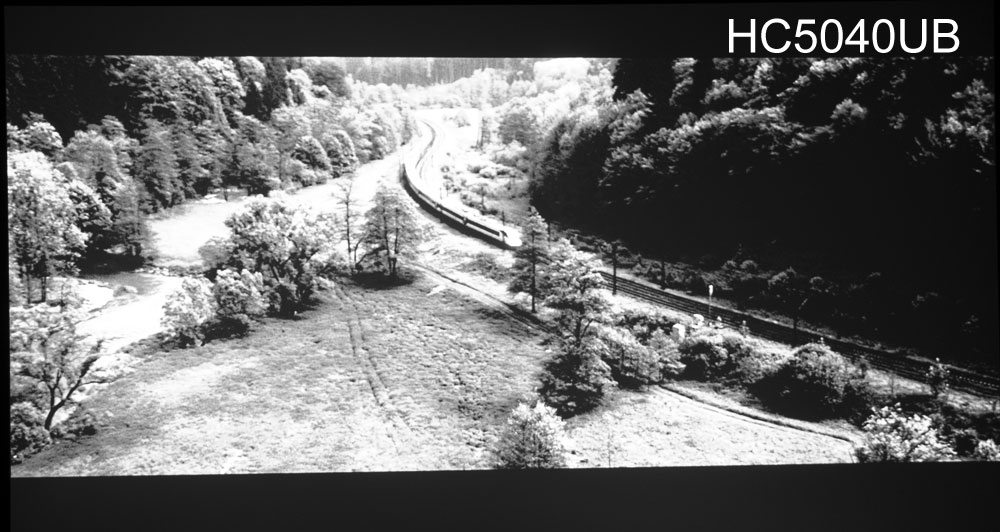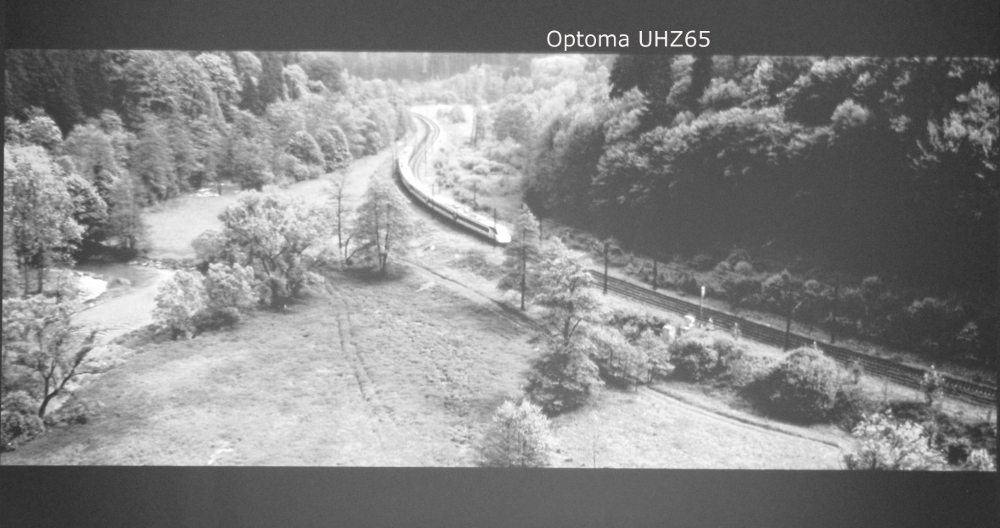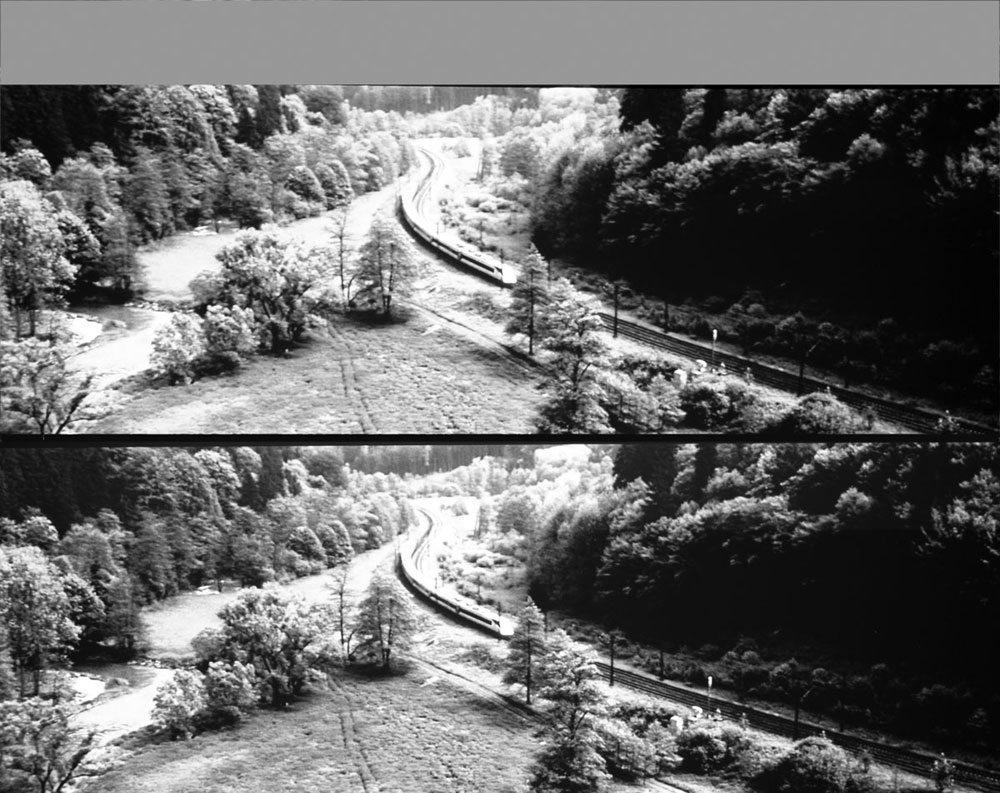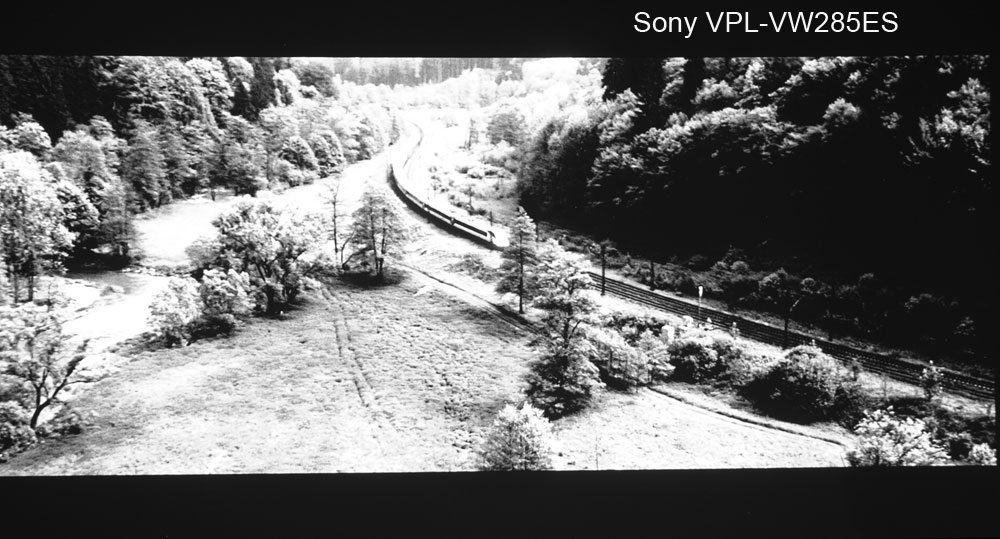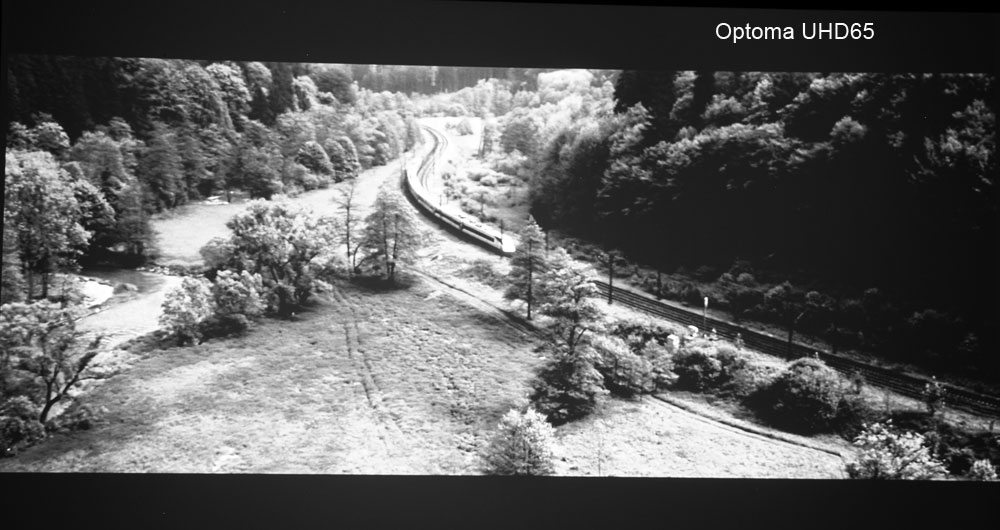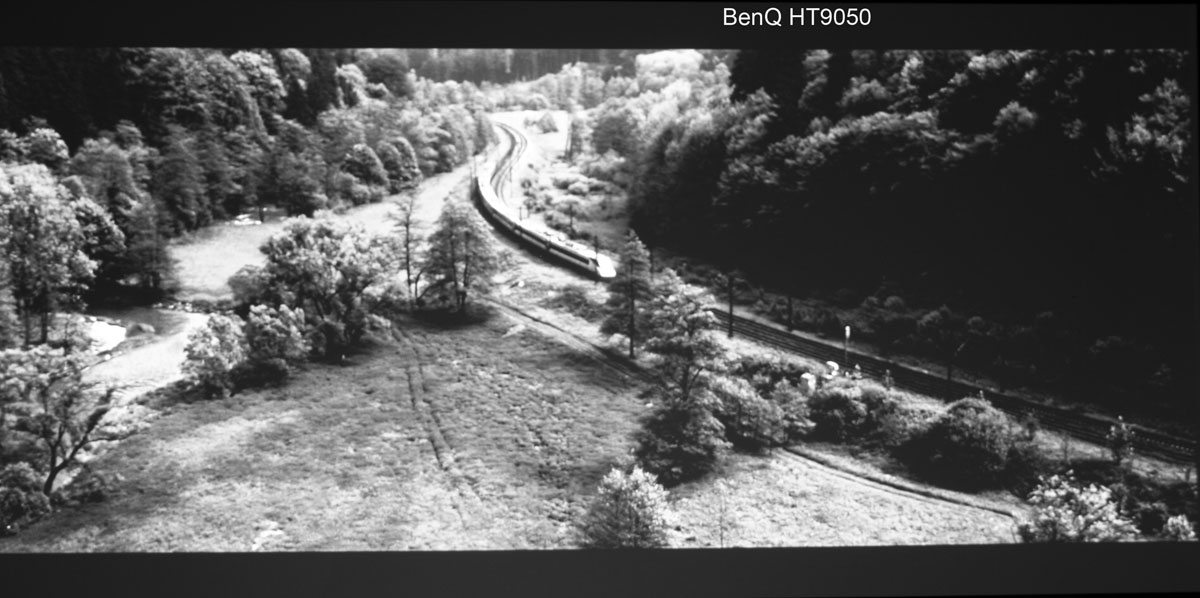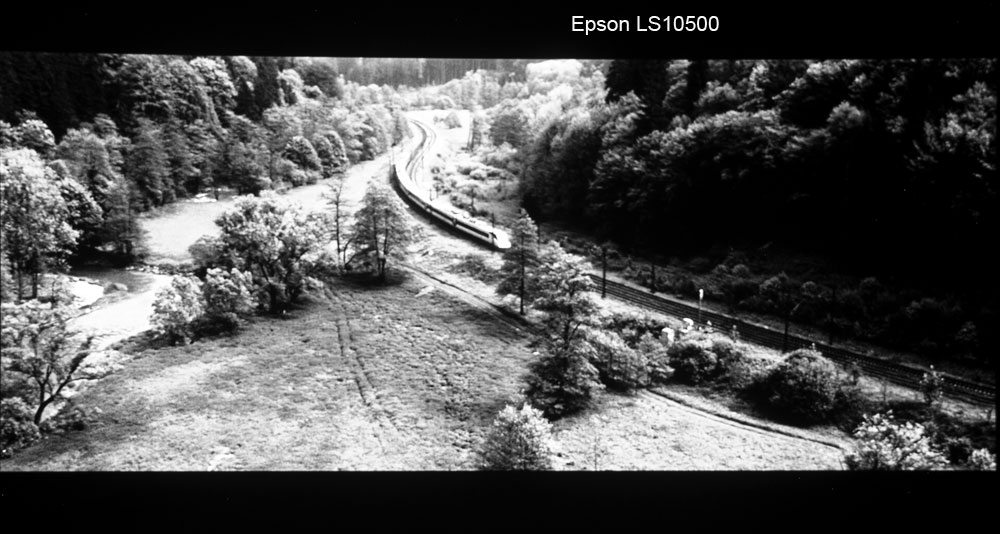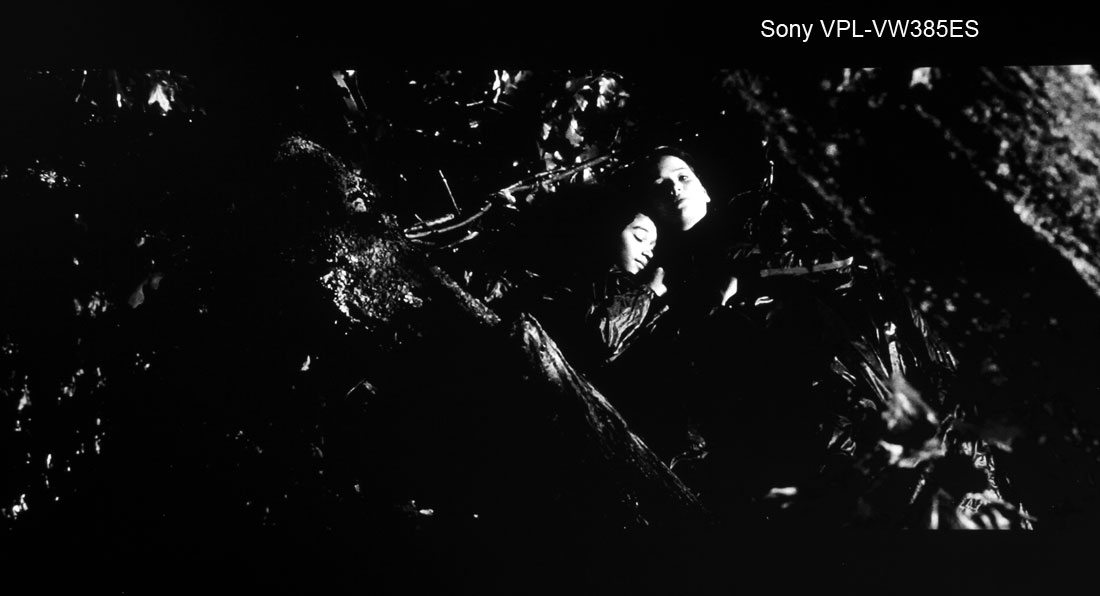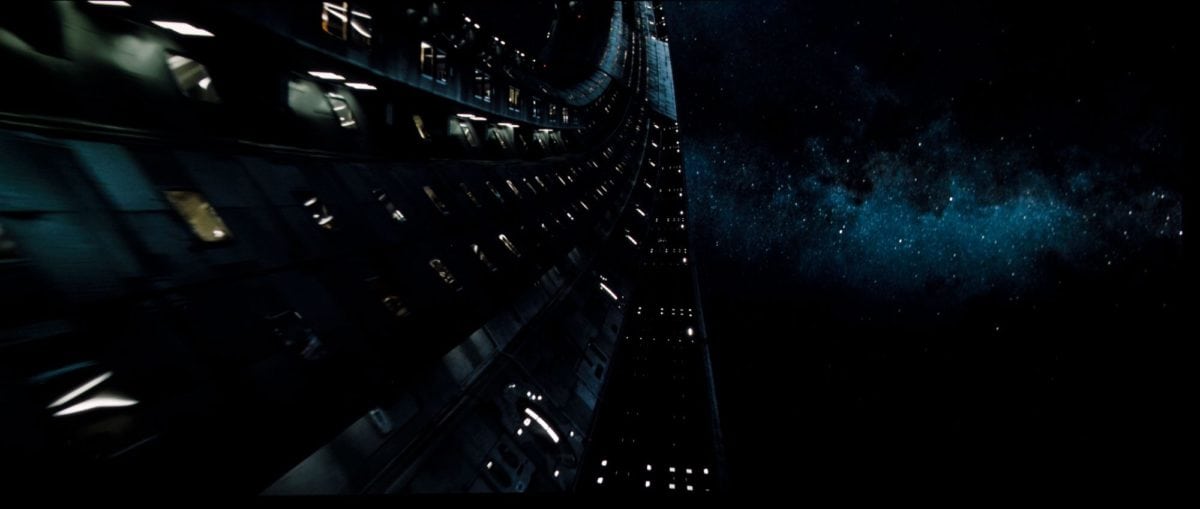Best I can tell, (I’m still not an AV engineer or professional calibrator – although years ago, I had the gear, and did my own calibrations – I hated it) the Sony seems to have a bit better native contrast than those Epsons, but the Epson pushes its Dynamic Iris a bit harder, so there are dark scenes where the Epson might have a slight edge, and others where the Sony does. The pumping action of the Sony Dynamic Iris (which is very controllable – see the Special Features page), is minimal – like the Epsons, it’s rarely noticeable, except on things that hate Dynamic Irises such as what credits on a black background where the white text disappears for a second before the next credits appear. On most normal content though, you just won’t notice (or rarely), and unlike some other types of “noise,” it’s not likely to bother you in the least.
Do I wish for better? Certainly, there’s definitely room for improvement. Consider that as you move up the Sony 4K projector food chain, you can expect blacker and blacker blacks. Their $15K VW665ES (review), is a little better, and Sony’s two $25K laser light engine home theater projectors are better at it still. The flagship VW5000ES is the best of the Sonys, of course, you have to expect it to be significantly better considering its laser engine (with 5,000 lumens), better light path, and that particular Sony’s $60,000 sticker price. Hey, that’s over 5X the price of this VW385ES.
As usual, our James Bond night train scene from Casino Royale has been greyscaled and over exposed, and presented with the same scene from a number of other projectors – both less and more expensive. In addition, we have included in the photo player other photos of other really dark (and dark) scenes. Remember, looking good on a cityscape scene is easy – hard is a scene where even the brightest part of it has to be considered seriously dim, such as the outside of the space ship in Passengers. Or the marching attackers of the dam in the Hunger Games: Mockingjay Part 1.
Personally, I would prefer to have the black levels of the Sony laser projectors instead, and deep down wish I could spend double to get it, but – one more time: I can live with the VPL-VW385ES. It looks great in my home theater filling a 124” screen. Even with close to 1,500 lumens on the screen, those blacks are pretty black.
Here’s the thing: We’ve reviewed more than a half dozen of the slightly lower native resolution 4K UHD DLP projectors so far. A lot of fans of those (they do provide sharpness approaching that of this Sony) wonder why anyone would spend $5K for the “entry level” true 4K Sony VW285ES, or this VW385ES. That’s fair if you focus solely on sharpness. But when you compare the black levels…
Let me put it this way: I have yet to see a 4K UHD projector, whether $1,500, or $8,995 ($1,000 more than this Sony), that even meets my minimum definition of ultra high contrast, and when you only look at the $5K and under 4K DLPs, from an acceptable black level performance standpoint, they all earn a “fail.”
It’s too bad, but one day (not too far out), I expect that to change. Discussions with some DLP manufacturers have had them admitting that they need to up their “black level” game. I expect Dynamic Irises to start showing up more and more in DLPs, if not in the next generation, then the following. BenQ, for one, has demonstrated some really good Dynamic Irises long ago, but many attempts by others have been very rough – enough to make watching somewhat painful. I have often recommended not using highly visible irises, or lamp dimming features, because they can become a real distraction if not done well.
Bottom Line: Works for me. Better black levels would, of course, be better, but this Sony gets the job done – enough that I have considered buying one. I’m still holding off though, since I have a steady parade of great projectors rolling through my theater.
Next!

